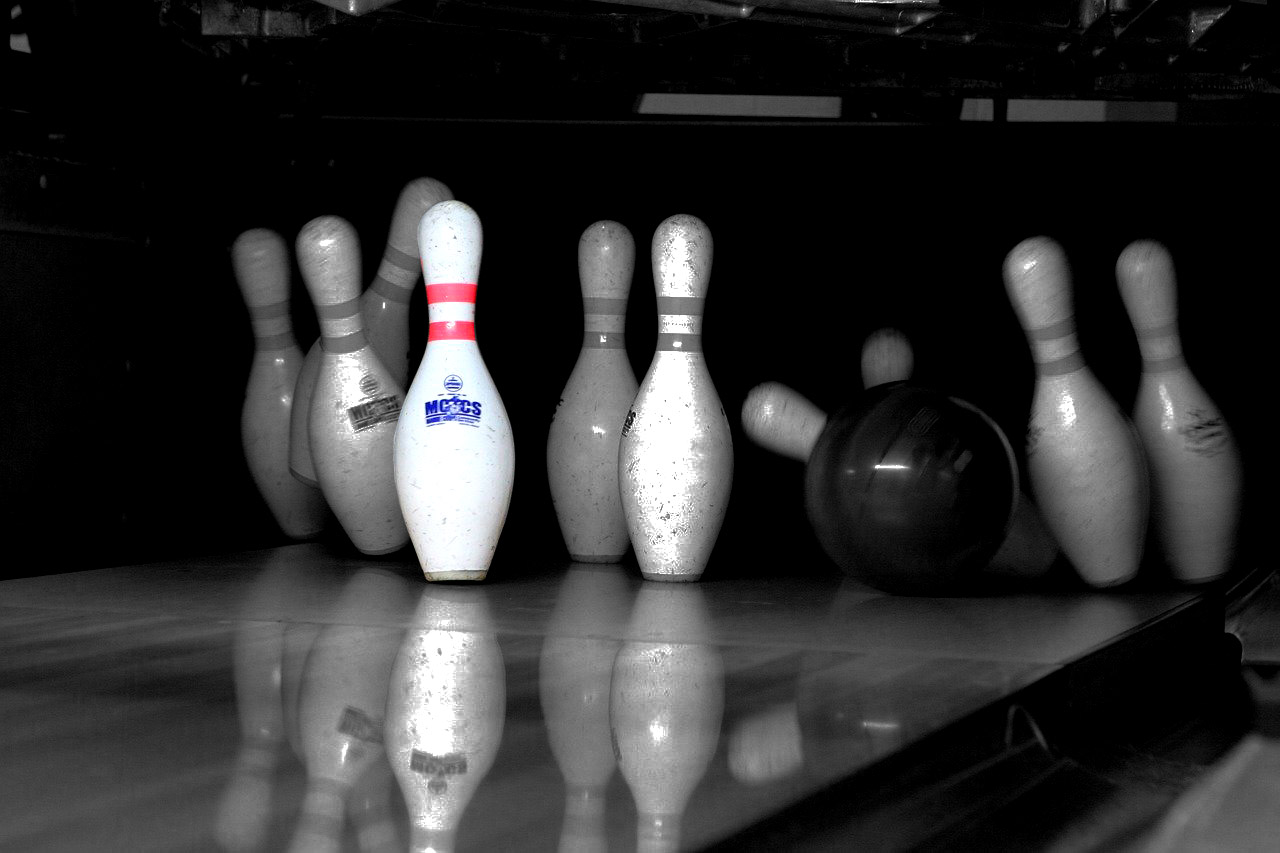Coupon excludes instant bonus items, hot deal items, and gift certificates.
Tag: Bowling Terms
What is a Turkey in Bowling? Origin, Meaning, and Tips
Posted Aug 27, 2024 In: Bowling Terms
 Bowling has its own unique set of terms, and one of the most celebrated is a "turkey." If you've ever heard someone mention it at the lanes and wondered what it means, your curiosity stops here...
Bowling has its own unique set of terms, and one of the most celebrated is a "turkey." If you've ever heard someone mention it at the lanes and wondered what it means, your curiosity stops here...
RG Values and Their Meanings
Posted May 2, 2024 In: Bowling Terms | Bowling Tips
 Now we all know that bowling balls have different weight blocks and different coverstocks to give them their own personal reaction. Now with these different materials and shapes, we get RG Values. What does RG stand for? Well RG means Radius of Gyration. (1) USBC defines RG of a bowling ball as a measurement in inches and is the distance from the axis of rotation at which the total mass of a body might be concentrated without changing its moment of inertia. Think of it like a Football. It can spin happily end over end or as a spiral. It will take longer to make one rotation at the same speed end over end than it will to rotate as a spiral, because the Radius of the end over end axis is longer than the spiral axis. So this means the end over end axis is the High RG plane and the spiral axis is the Low RG plane. The difference in those two axis RG values gives you your Differential. When you see the RG number on a ball advertised they are giving you the Low RG plane number. Now Differential is the driving force that causes track flare...
Now we all know that bowling balls have different weight blocks and different coverstocks to give them their own personal reaction. Now with these different materials and shapes, we get RG Values. What does RG stand for? Well RG means Radius of Gyration. (1) USBC defines RG of a bowling ball as a measurement in inches and is the distance from the axis of rotation at which the total mass of a body might be concentrated without changing its moment of inertia. Think of it like a Football. It can spin happily end over end or as a spiral. It will take longer to make one rotation at the same speed end over end than it will to rotate as a spiral, because the Radius of the end over end axis is longer than the spiral axis. So this means the end over end axis is the High RG plane and the spiral axis is the Low RG plane. The difference in those two axis RG values gives you your Differential. When you see the RG number on a ball advertised they are giving you the Low RG plane number. Now Differential is the driving force that causes track flare...
Bowling Term Glossary
Posted Feb 29, 2024 In: Bowling Balls | Bowling Knowledge | Bowling Terms
 The exact origin of bowling is unknown but archeologists have traced its beginnings at least back to ancient Egypt. Much later, in Germany, the trend to bowl with nine pins became popular and spread throughout Europe. European colonists brought the game to North America as both an indoor and outdoor sport. Governing agencies, however, attempted to ban indoor bowling as it became more and more associated with drinking and gambling. In the early nineteenth century, ten-pin bowling evolved as a means of circumventing a public ban of nine-pin bowling in Connecticut. Regulatory groups began the process of standardizing all aspects of the sport in the late 1800's but it still retained its reputation for being a "low life" activity. Although highly popular, it was not until women entered the sport of bowling and gained more influence that ten-pin bowling became a more respectable pastime. National organizations began to see a decline in membership after the late 1970's and in 2004 merged to form one cohesive organization – the United States Bowling Congress (USBC). USBC's primary aim is the promotion and development of the sport in the interest of all bowlers...
The exact origin of bowling is unknown but archeologists have traced its beginnings at least back to ancient Egypt. Much later, in Germany, the trend to bowl with nine pins became popular and spread throughout Europe. European colonists brought the game to North America as both an indoor and outdoor sport. Governing agencies, however, attempted to ban indoor bowling as it became more and more associated with drinking and gambling. In the early nineteenth century, ten-pin bowling evolved as a means of circumventing a public ban of nine-pin bowling in Connecticut. Regulatory groups began the process of standardizing all aspects of the sport in the late 1800's but it still retained its reputation for being a "low life" activity. Although highly popular, it was not until women entered the sport of bowling and gained more influence that ten-pin bowling became a more respectable pastime. National organizations began to see a decline in membership after the late 1970's and in 2004 merged to form one cohesive organization – the United States Bowling Congress (USBC). USBC's primary aim is the promotion and development of the sport in the interest of all bowlers...
Bowling Etiquette
Posted Dec 24, 2014 In: Bowling News | Bowling Technology | Bowling Terms | Bowling Tips | Coach's Corner | PBA Bowling | Special Note | Tips

 ..
..
Random Facts About The Game of Bowling
Posted Dec 10, 2014 In: Bowling Terms | Bowling Tips | Coach's Corner | TipsDid you know nine-pin bowling was a form of bowling that is now banned in all states but Texas? Nine-pin and ten-pin bowling have been known to Texas since the 1830's. It was a lot more difficult to get a strike back then, especially with a wooden ball. It wasn't up until 1905 when the first rubber ball was introduced to the game. Now it is said that when you bowl an optimal strike, the ball itself only hits four pins. A right handed bowler's ball actually connects with the 1, 3, 5 and 9 pins (or in some instances the 8 pin), and a left handers will contact the 1, 2, 5 and 8 pin (or 9 pin), so theoretically, if I bowled a 300, I'd only hit 48 pins. Each pin is set 12 inches apart from each other. Well for an optimal strike to be thrown in the first place, then you'd need to throw your ball to hit the pocket at 6°. The bowling pins that are set in the pocket, they each way roughly three and a half pounds, but as long as the pin tilts at least 9° then you're in great shape. All pins that tilt at least 9° will fall. That is the point of no return for the bowling pin, it will always fall...
Continue Reading









